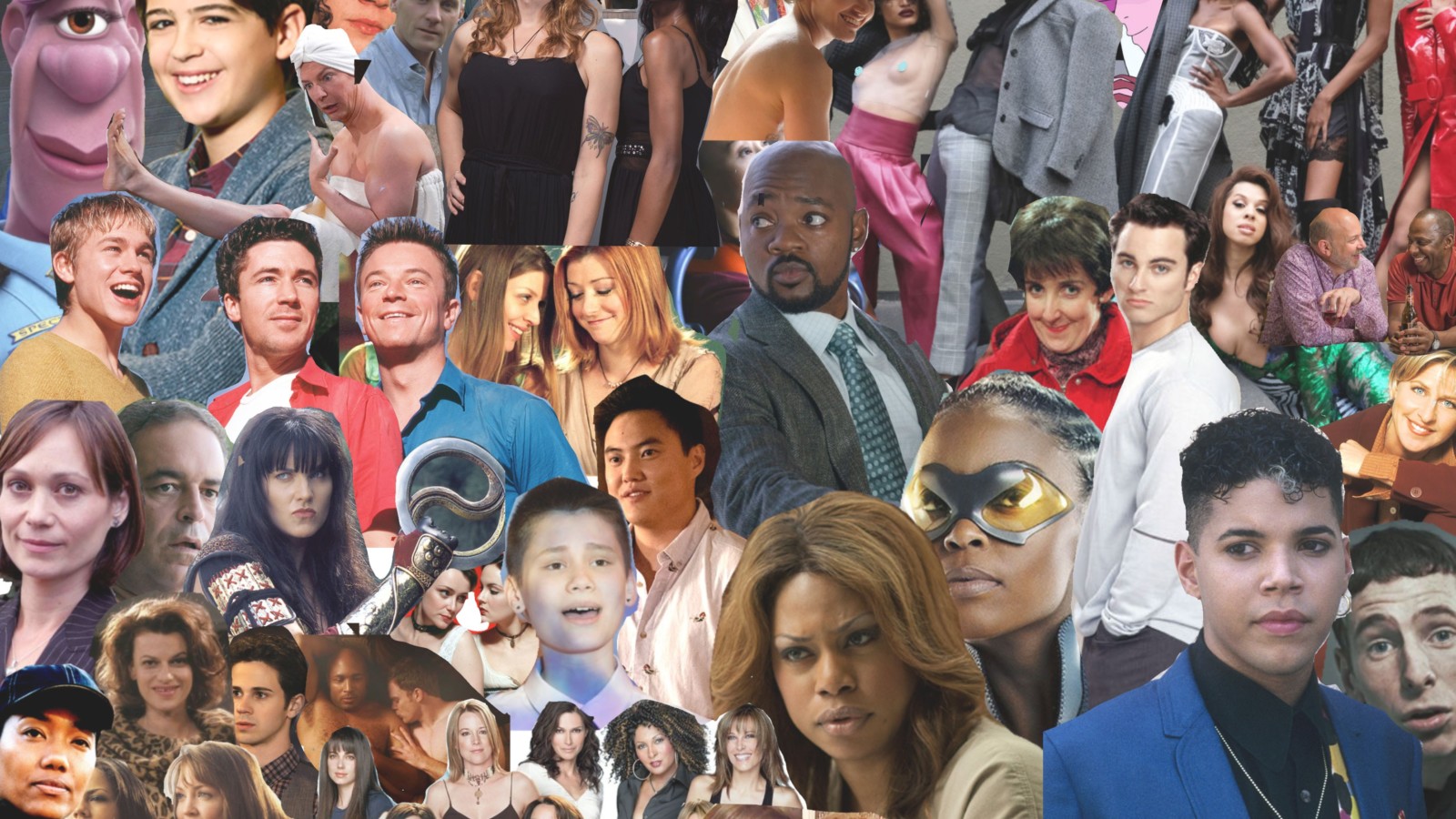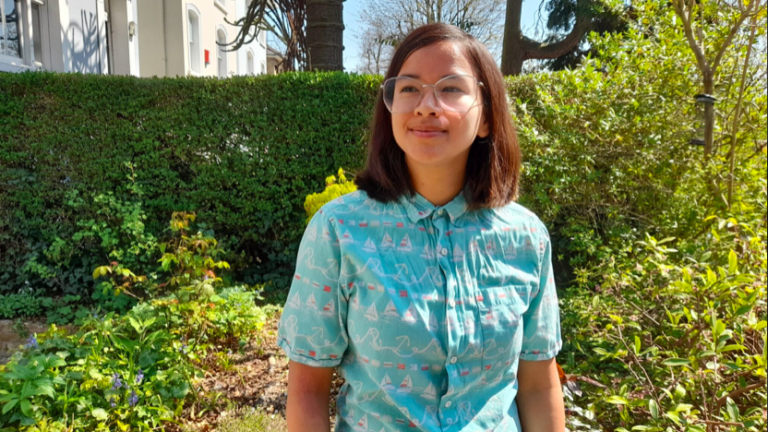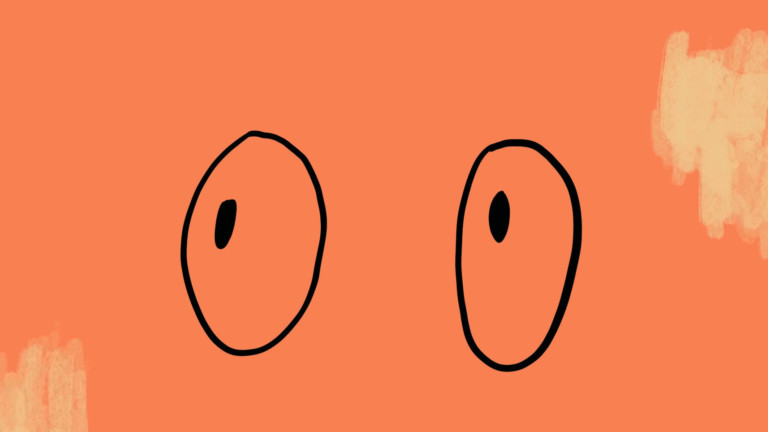Pippa Sterk finds common ground through the shared memories of searching for queer representation on the telly.
The creation of Queer Treatment started with a series of workshops. In November 2020, roughly a dozen people (including myself) gathered over Zoom, most of us had never met each other before. The workshop started with a discussion, facilitated by artist Amy Pennington, around how media representation has influenced our own queer identities.
We were encouraged to talk about our favourite TV programmes growing up, which characters we related to most, and which films had given us that first inkling that we might not be straight.
These conversations were then collated into a pitch for a show as we would like to see it: all the exciting, and refreshing bits of queer representation, without the overtones of bigotry or oppression.
It felt odd at first, sharing childhood memories with people that I didn’t really know, and who were sometimes twice (maybe three times?) my age. Surely they would have no idea what I was talking about, we would have nothing in common, no shared points of reference. However, it didn’t matter that we didn’t all have the same memories of consuming media. In fact, what stood out is how similar our interests were despite our different choices of TV shows or characters.
Most of the characters we identified with were outsiders in some way - the tomboyish girl, the feminine boy, villains, monsters, characters that are half-animal or part-robot, characters where we’re not sure what they are, just that they aren’t abiding by any definition that society sets. This just goes to show that seeing our queerness reflected, goes further than the characters that are ‘like us’ on the surface. We can identify with characters simply because they can show us a different way of existing. Characters can be fascinating exactly because they are so unlike us, because they stray far away from what we recognise as ‘normal’ or as human.
This mix between the normal and the abnormal, the real and the fake was not just apparent from the discussions, but also from the short film that Amy created as a result of the workshops.
Queer Treatment is part auto-biography, part animation, part stock/archive footage, and part transcripts of our discussions. While the stock footage and the quotes from the workshops ground the film in a historical and social reality, the animation works to fill in the gaps of our imagination, and visually connects one person’s story to another. Across screens, we are invited to share in Amy’s own recounting of growing up queer and searching for representation in popular culture.
On the topic of animation and cartoons, Amy says the following: ”We are really drawn to them, because they’re weird and they’re queer. Somebody’s got a high voice, somebody’s got hairy armpits. As queer people you are yourself maybe a mix of genders, or a mix of different things, and you really see that in the cartoons. Sometimes it’s more subconscious, you’re just drawn to it. And then maybe as adults we don’t really get the chance to go back and think about it, because we’re adults and we shouldn’t be watching cartoons.”
The film doesn't just encourage us to go back and discuss our favourite childhood obsessions, but also asks to value them as formative moments in our lives.
The film also considers how online spaces can provide these formative sources of representation for a younger generation. TikTok is hailed as a platform where young queer people can share their authentic experiences, and the online multiplayer Overwatch is praised for a fan culture that was quick to embrace the confirmation of a character’s gayness. The internet can be a democratising place, not just in terms of the representation we can take from it, but also in how much of ourselves we can give to it: these workshops and the short film would not have been possible if it hadn’t been for Zoom technology.
Having parts of our discussions interwoven into the film has been immensely exciting - a tangible and collaboratively-created testament to everyone who was at the workshops. It’s easy to criticise or just state your opinion, simply talk about your favourite shows, but actually feeling like you have had a tiny part in making something as unique as this short film, has a much more nurturing effect. It makes you imagine all the possibilities, and how much we would have missed if even one person had not shown up to the workshop, how many more ideas are just bubbling beneath the surface.
Altogether, Queer Treatment sits in the space where community-building, art, discussion, and memory intertwine.
About their aim for the short film, Amy notes: “I think that it can be scary when you’re growing up, and you can’t see yourself in anything. The things that the film talks about might be really outdated now for other people, but it’s that feeling of grabbing at things, and there are other people out there doing that too. And even when you see yourself in things that are not quite right, that don’t reflect your experience, you can start piecing these little things together eventually, and you find other people. What I wanted to convey for queer people growing up is, basically, ‘it’s gonna be OK’.”
Queer Treatment is partially a testament to the formative experiences that we carry with us as our own personal archive. However, on top of this, it also dares to reimagine these experiences as interconnected, unfinished, open to future adaptation. In this reimagining, Queer Treatment creates a conversational and communal archive. This new archive consists not just of untouchable, historic footage that connects us to our past, but of continuous re-interpretation that looks optimistically and playfully towards the future.



 Free
Free